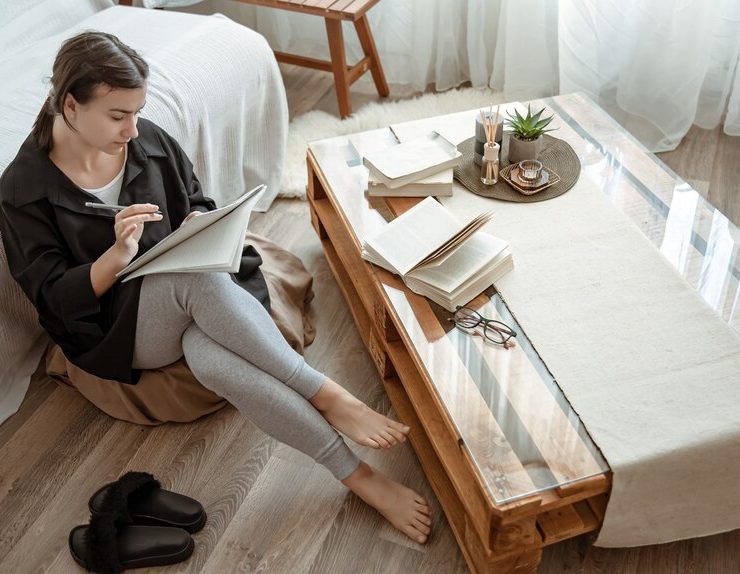Embracing Minimalism: Your Guide to Declutter and Simplify Your Space
Are you feeling overwhelmed by the clutter in your home? You’re not alone! Many of us struggle with the chaos that comes from too many items, whether they’re sentimental keepsakes or just occasional purchases that seemed like a good idea at the time. Lucky for you, embracing minimalism doesn’t mean you have to toss everything in a dumpster. It’s about making intentional choices about what you keep and what serves a purpose in your life. In this guide, we’ll explore practical tips for decluttering your space, maximizing functionality, and creating a home that feels more open and inviting. Let’s dive in and discover how a minimalist approach can lead to a more peaceful and enjoyable living environment!
Understanding Minimalism
Before we delve into the how-tos of decluttering, let’s establish what minimalism actually entails. Minimalism isn’t just about having fewer possessions; it’s about designing a lifestyle that focuses on quality over quantity and experiences over stuff. It encourages mindfulness, allowing us to appreciate what we own and the space we inhabit.
Why Declutter?
Clutter can be more than just physical items taking up space; it often creates stress and mental clutter. With fewer possessions, we can breathe easier, focus on what truly matters, and create an environment that nurtures our well-being. So, let’s tackle the clutter in a way that feels manageable.
The Mindset Shift
Shifting your mindset is crucial for embarking on a minimalist journey. Recognize your attachment to items and question their purpose. This can help you evaluate what truly brings joy or utility to your life. It’s about shedding the notion that more is always better.
Create a Vision
Start by imagining what your minimalist home looks like. Is it cozy and inviting? Do you have open spaces and only the essentials? Having a clear vision will guide your decluttering efforts and remind you of your end goal.
Start Small
One of the best strategies for minimizing overwhelm is to start small. Pick a single drawer or a corner of a room and begin there. The positive momentum you’ll gain from completing small tasks can inspire you to tackle larger areas.
Set Achievable Goals
While the overall goal may be a minimalist home, set smaller, achievable targets for yourself. For instance, aim to declutter for 30 minutes a day or tackle one space per weekend. This way, you’re working towards your goal without getting burned out.
The Four-Box Method
A popular strategy is the Four-Box Method, where you categorize items into four boxes labeled: Keep, Donate, Trash, and Relocate. This method simplifies decision-making as you assess each item and determine its fate.
The 30-Day Challenge
Consider the 30-day declutter challenge, where you eliminate one item on day one, two items on day two, and so on. By the end of the month, you’ll have removed 465 items from your home, which is a significant decluttering accomplishment!
One In, One Out Rule
To maintain your minimalist lifestyle after decluttering, adopt the ‘one in, one out’ rule. Whenever you buy or receive a new item, make it a habit to let go of another. This prevents accumulation and promotes mindful purchasing.
Declutter by Category
Instead of going room by room, try decluttering by category. For example, tackle all the clothing in your home at once. This method allows you to see how much you truly own in that category and can be quite revealing.
Sentimental Items
Sentimental items often present the toughest challenges. Take photos of these items rather than keeping the physical objects. This way, you preserve the memory without the clutter, allowing you to hold onto the essence without the physical space.
Evaluate Functionality
As you sort through your items, ask yourself whether each item serves a functional purpose. If it’s broken or hasn’t been used in a year, it’s probably time to let go. Consider whether an item contributes positively to your daily life.
Use the 90/90 rule
The 90/90 rule suggests that if you haven’t used an item in the last 90 days and don’t plan to use it in the next 90 days, it might be a good idea to let it go. This rule helps put a timeframe on your possessions.
Plan a Donation or Sell Event
Once you’ve sorted through items, plan a donation or sell event. Organizing a garage sale or donating to a charity not only clears your space but also benefits others, adding a feel-good aspect to your decluttering efforts.
Organizing as You Declutter
As you declutter, also take the opportunity to organize. Create designated spots for your belongings so everything has a home. This makes it easier to maintain a tidy space moving forward.
Keep Flat Surfaces Clear
Make it a rule to keep flat surfaces like tables, countertops, and desks clear of clutter. A clear surface visually opens up a room and is a practical reminder to maintain a minimalist approach.
Visual Appeal
Incorporate design elements that reflect minimalism, such as neutral colors, natural materials, and open spaces. Aesthetic choices can inspire you to keep your home decluttered and enhance your overall mood.
Involve Your Family
If you live with others, involve them in the decluttering process. Share your vision of a minimalist home, and encourage them to discuss what items are important to them. Together, you can create a cohesive and clutter-free environment.
Make Regular Decluttering a Habit
Decluttering shouldn’t be a one-time event. Set a regular schedule for revisiting spaces and assessing what’s still serving you. Quarterly or monthly check-ins can help you stay ahead of clutter creep.
Mindfulness in Purchasing
Be intentional about your purchases. Before buying something new, consider whether you truly need it and if it aligns with your minimalist vision. This thought process can help prevent unnecessary accumulation in the future.
Final Thoughts on Minimalism
Embracing minimalism is about finding what truly matters to you and letting go of the rest. It’s a journey of self-discovery and personal growth, leading to a more serene and intentional lifestyle. With patience, practice, and a commitment to maintaining your ideals, you can create a minimalist haven that supports your overall well-being.
Celebrate Your Progress
As you declutter and simplify your space, take time to celebrate your progress. Acknowledge the hard work you’ve put into creating an inviting environment free of clutter. It’s a vital part of reinforcing your commitment to minimalism.
Conclusion: Your Path to a Serene Home
Decluttering is more than just cleaning out your possessions; it’s about creating a home that reflects who you are and what you value. By embracing minimalist principles, you can cultivate a peaceful atmosphere where you can thrive. Remember, the journey to a minimalist lifestyle is unique for everyone, so take it at your pace and enjoy the process!






